DBT Skills Lists
Utilize this free DBT Skills List to help individuals develop strategies to manage their emotions and improve relationships. Download the free PDF now.


What is a DBT Skills List?
Dialectical Behavior Therapy (DBT) is a psychotherapy approach that helps individuals acquire effective tools for emotional regulation, enhancing relationships, and navigating life's difficulties.
DBT is widely used to treat individuals with mental health disorders such as depression, anxiety, post-traumatic stress disorder (PTSD), and borderline personality disorder. DBT combines cognitive-behavioral therapy and mindfulness techniques structured into four modules: Mindfulness, Interpersonal Effectiveness, Distress Tolerance, and Emotion Regulation.
Mental health professionals can use a DBT Skills List to assess and monitor the progress of individuals undergoing DBT treatment. The skills list includes different categories of DBT skills. Each skill is broken down into a specific task or practice that the individual can do to help them reach their goals in therapy.
Some examples of DBT skills include mindfulness techniques like nonjudgmental awareness, self-soothing practices like deep breathing and relaxation exercises, interpersonal effectiveness strategies such as active listening and assertive communication, distress tolerance methods like distraction technique and positive reframing, and emotion regulation skills such as identifying triggers for negative emotions.
It's important to note that a DBT Skills List is not a static and rigid checklist. It's meant to be used as a guide for the individual's journey to better mental health. Different people may benefit differently from different techniques.
DBT Skills Lists Template
DBT Skills Lists Example
How does it work?
Our printable DBT Skills List lets you explore the different DBT techniques and strategies for your client. Here's how to use the template:
Step One: Access the Skills List
Download the DBT Skills List using the provided link. It's also accessible through the Carepatron app or our resource library.
Step Two: Explain its purpose
Discuss the purpose and structure of the skills list with your client. Explain that it equips them with strategies to effectively address challenges and achieve desired outcomes.
Step Three: Client utilizes the DBT Skills List
Allow your client sufficient time to work through the skills list. Ensure they comprehend each section and provide support if necessary.
Step Four: Assess and evaluate progress
Check-in with your client as they go through the DBT Skills List. Encourage them to take notes of their progress and make adjustments accordingly.
Step Five: Implement new skills into practice
Help your client devise a plan to incorporate newly learned skills into their daily routine. This will enable them to build better habits and develop better coping mechanisms.
When to use this DBT Skills List?
You can incorporate this practical DBT Skills List into your therapy sessions. It can help your clients pinpoint and address specific challenges, enhance decision-making abilities, and develop effective coping strategies. You can also use this to:
Improve communication skills
You can use our free DBT Skills List template to help your clients recognize and process verbal and non-verbal communication. This can open up new pathways of understanding, leading to better interactions with others.
Boost emotional intelligence
The DBT Skills List can also be an effective tool for increasing emotional intelligence. They can better understand, express, and manage their feelings by acquainting your clients with their inner emotional world. This can result in enhanced personal and professional relationships.
Assist in stress management
Another key area where this skills list can be beneficial is stress management. The strategies and techniques outlined in the list will provide your clients with practical ways to cope with daily stressors, promoting overall mental well-being.
Promote mindfulness
Implementing the practices from the DBT Skills List can assist clients in cultivating mindfulness. This includes learning to be present, aware, and non-judgmental of one's feelings, thoughts, and sensations. This awareness can lead to a profound shift in how clients perceive and interact with their surroundings.
Benefits of free DBT Skills List
Here are some of the advantages of our free DBT Skills List:
It's fully digital and printable
The DBT Skills List is available in both digital and paper formats, accommodating clients' preferences. It can be accessed anytime and anywhere with an internet connection.
It's easy to customize
You can tailor the DBT Skills List to meet your client's needs. Adjust the list to suit their objectives and create an action plan tailored to their situation.
It provides emotion regulation support
The skills list aids clients in recognizing and processing emotions healthily, granting them greater control over reactions to challenging situations or thoughts.
It offers practical coping mechanisms
The DBT Skills List delivers practical strategies for dealing with distressing situations. It provides tactics such as distraction, self-soothing, and improving the moment, which can be critical in managing crises and preventing harmful behavior.
It promotes self-care
By equipping clients with a range of coping skills, the DBT Skills List also encourages self-care. It enables clients to develop habits that support their mental, emotional, and physical well-being.
Strengthen your practice and client outcomes by leveraging this Dialectical Behavior Therapy template and action plan template.
Commonly asked questions
Mental health professionals specializing in dialectical behavior therapy use the DBT Skills List to guide clients in effectively addressing their challenges.
Utilizing the DBT Skills List offers structured problem-solving, improved self-awareness, practical outcomes, and enhanced clarity and focus.
Incorporate the DBT Skills List during therapy sessions or assign it as homework. Offering guidance and feedback during this process is crucial to nurturing practical problem-solving skills.


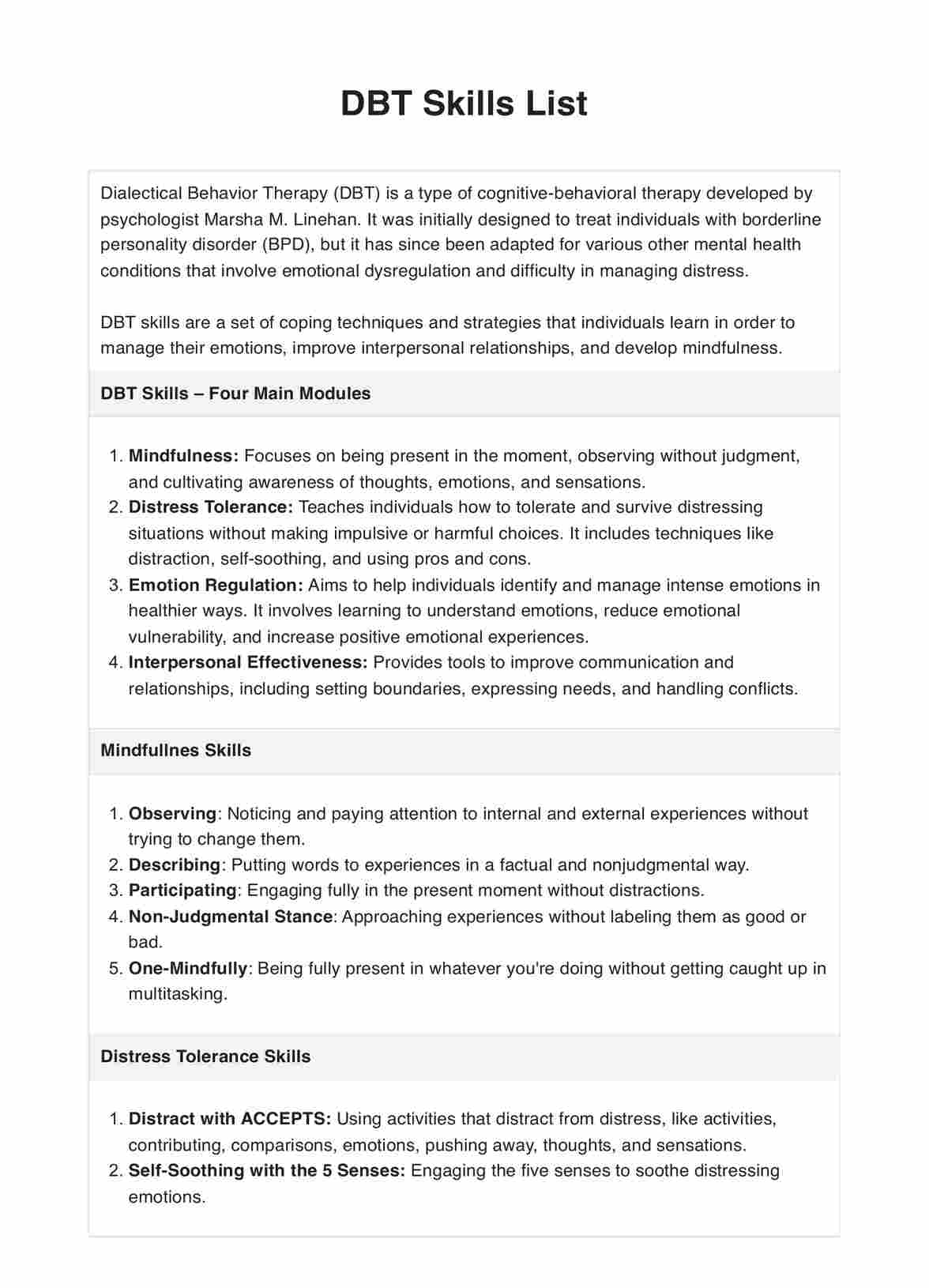
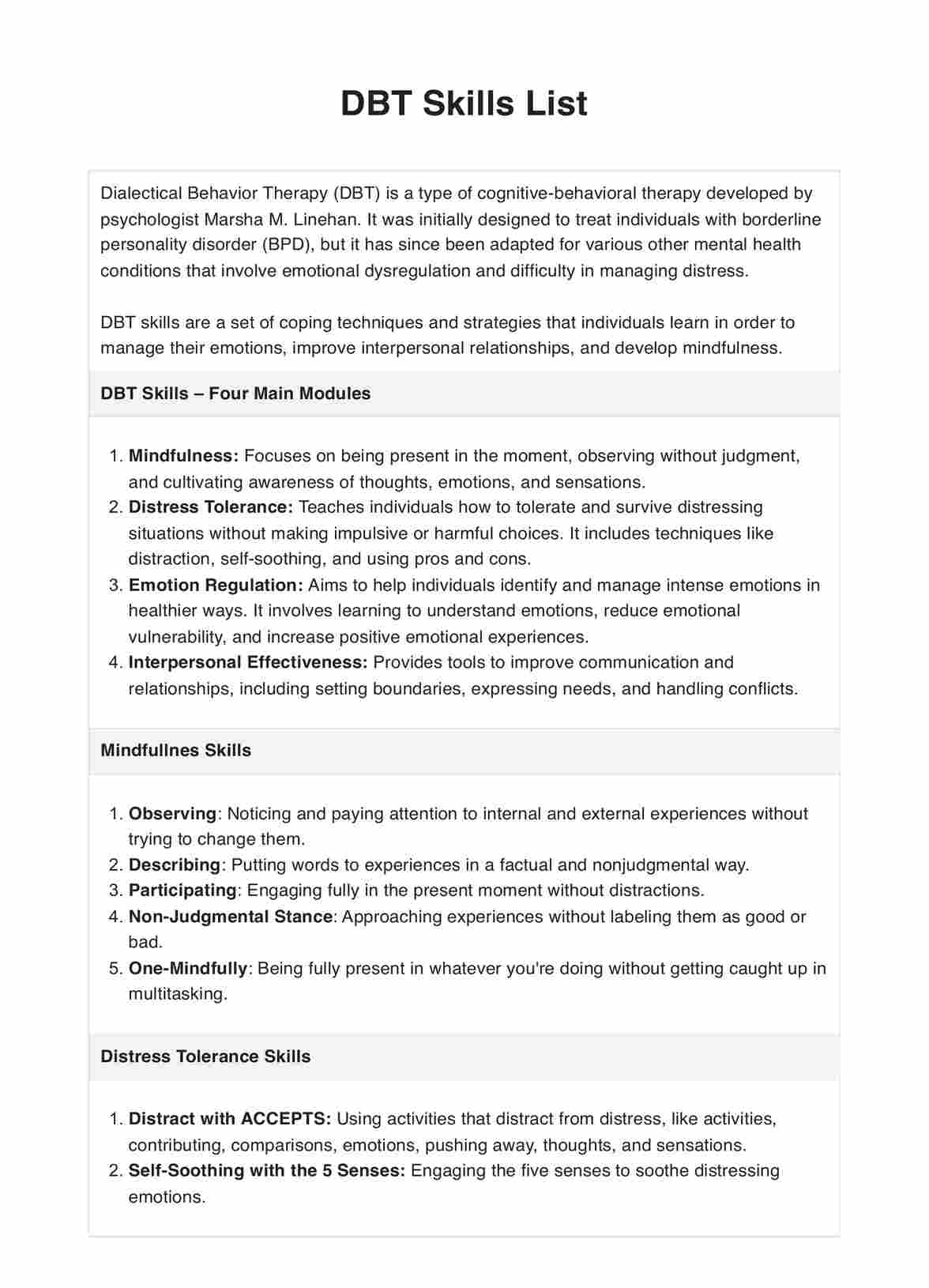

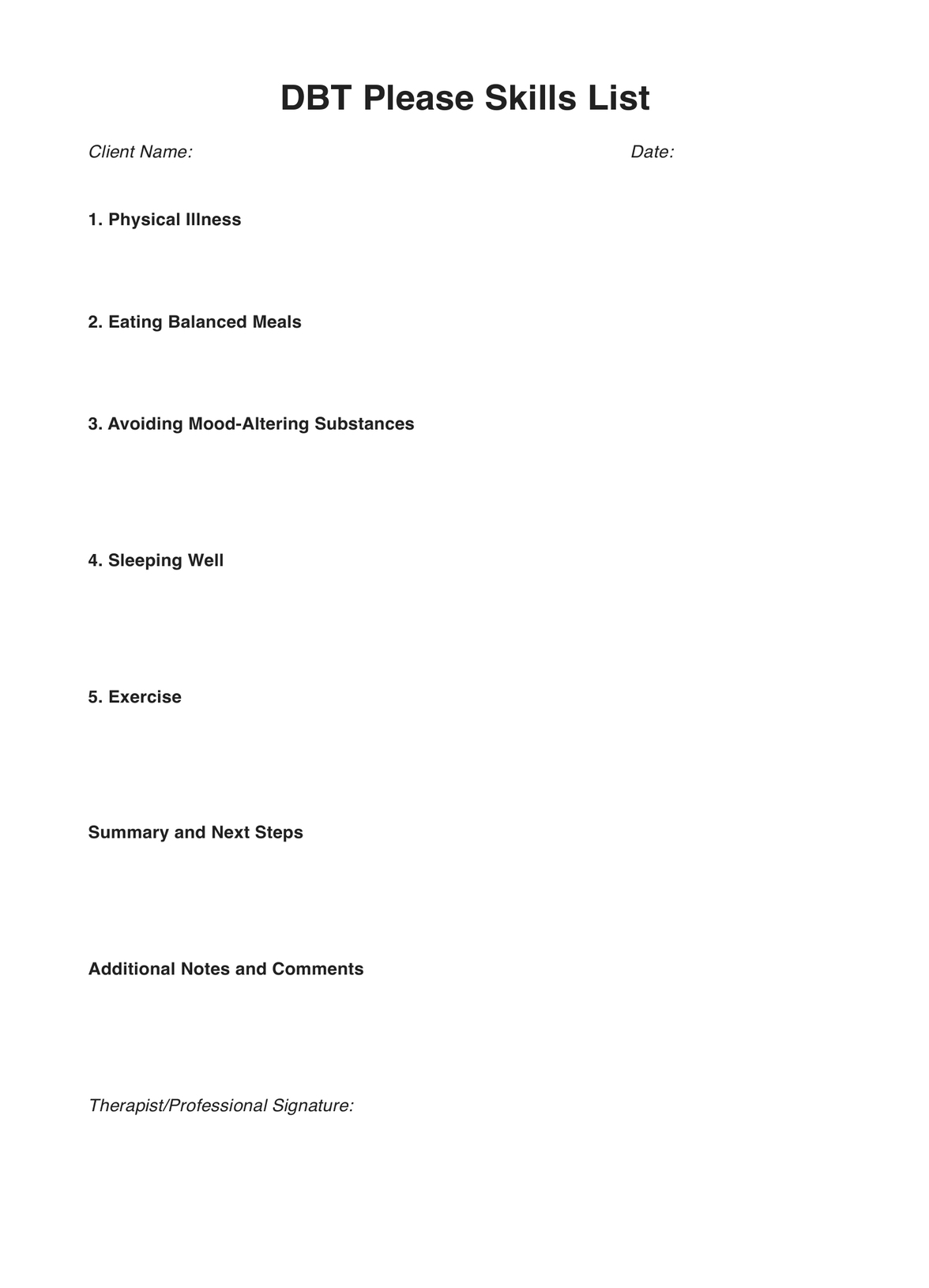
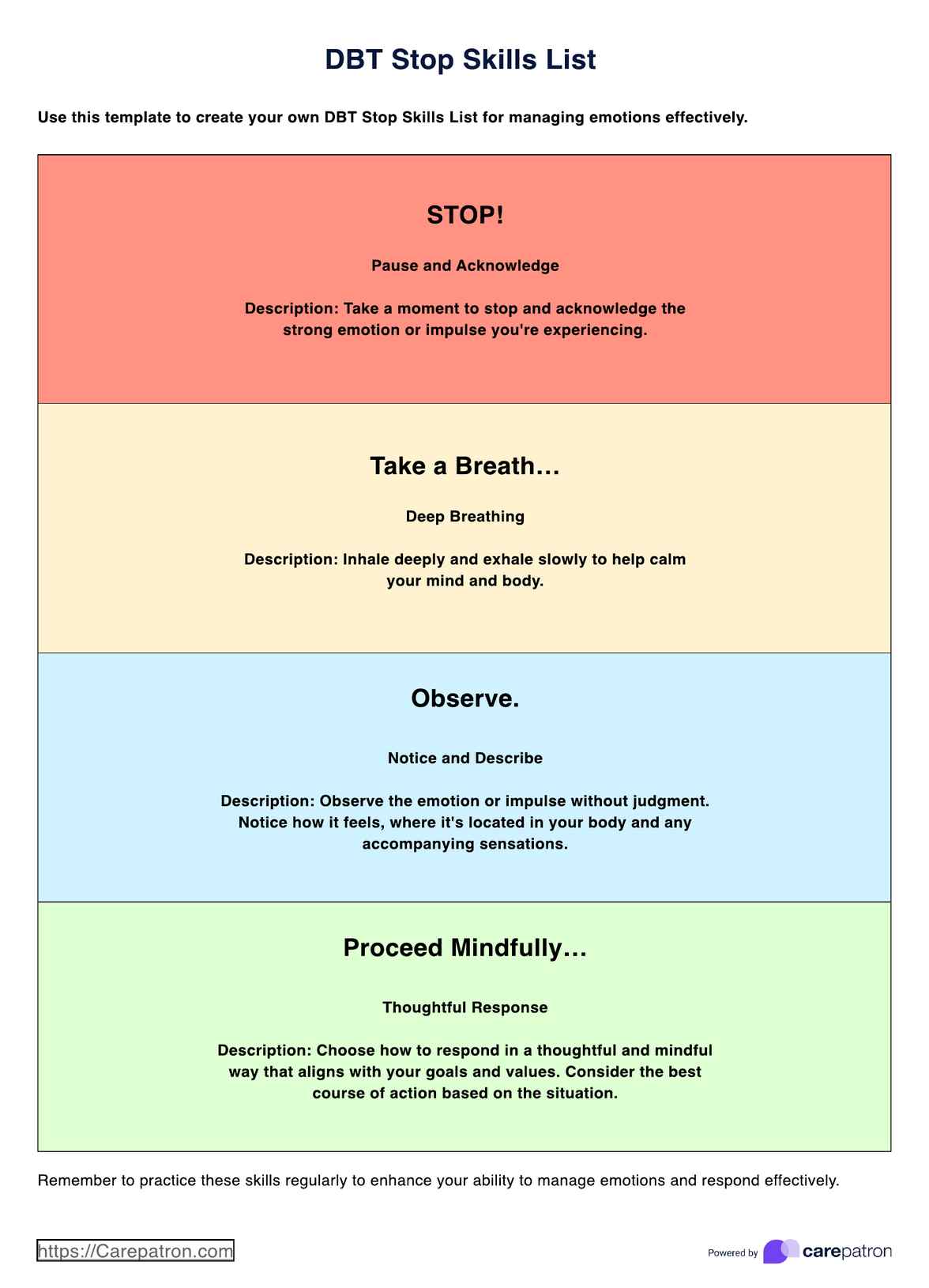
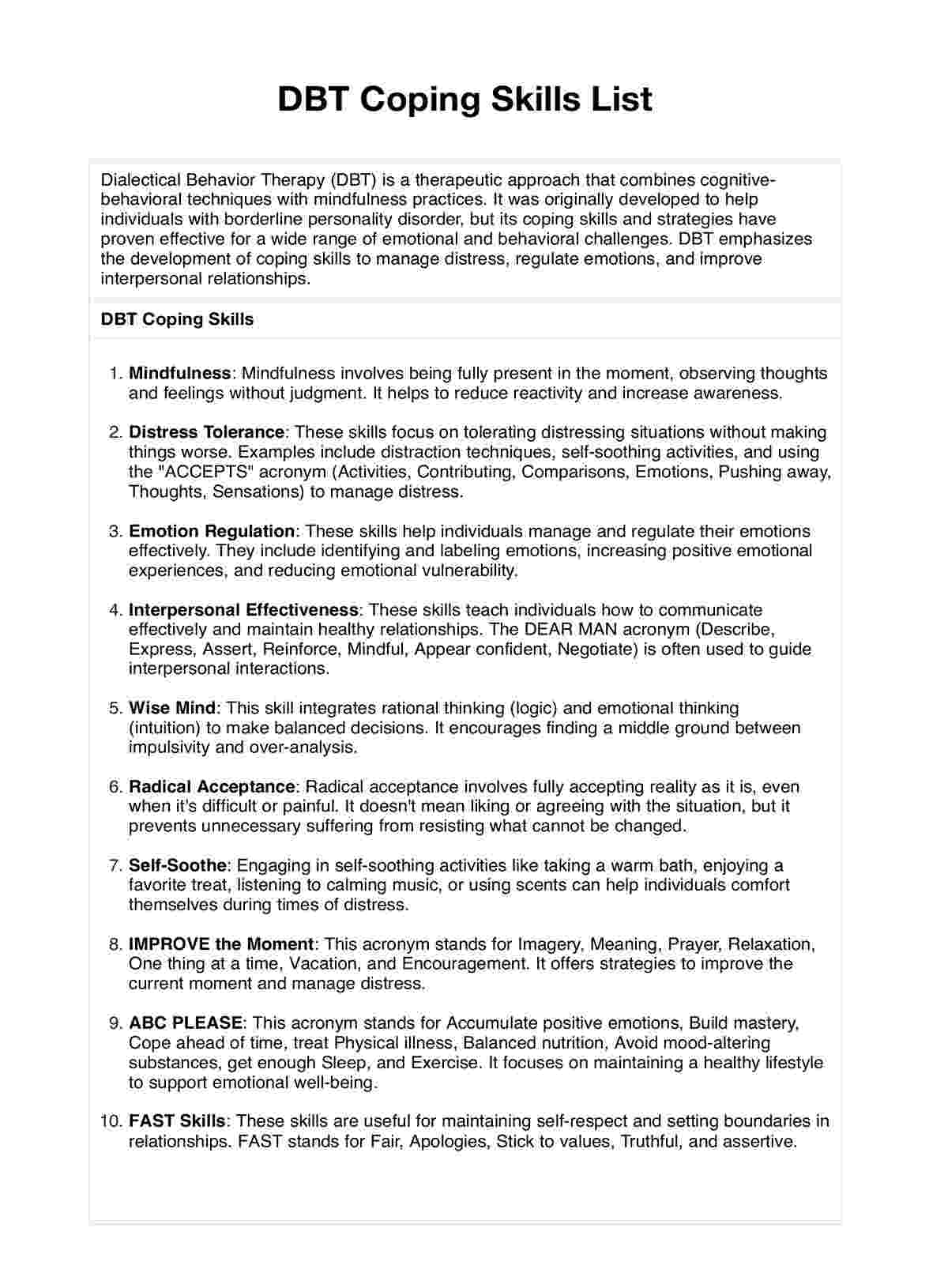














-template.jpg)



























































































